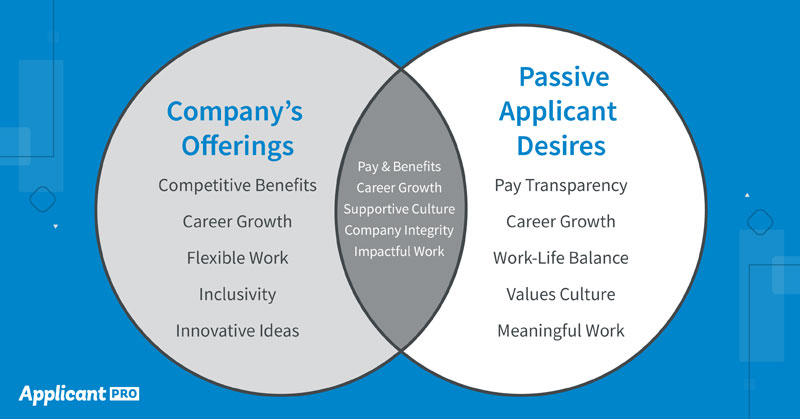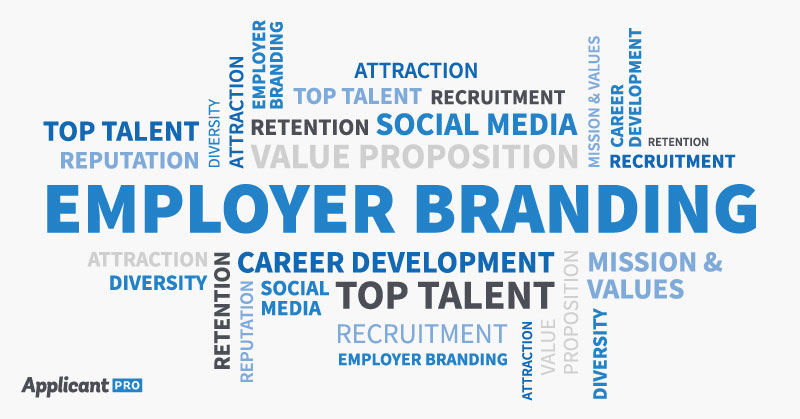

Three Unexpected Benefits of Recruiting Passive Applicants
Passive applicants are underrated; there I said it. In fact, I’d go so far as to say that without incorporating passive applicants into your hiring plan, you’re not only missing out on a lot of talent potential, but you’re putting yourself in a dangerous position because your recruiting strategy will be imbalanced. Without an evenly distributed and wide reaching talent pool, you risk making hasty hiring decisions, and these choices can have severe retention consequences later on.
Passive applicants won’t need your job and are less likely to pretend that they do in order to nab it.
Before we jump into the benefit of using passive applicants though, I’d like to take some time explaining what differentiates passive applicants from active applicants. To best understand this, we need to go “fishing.”
The term “fishing” is used in recruiting circles as a metaphor for how both passive applicants and active applicants are hired or “fished” for. When you recruit active applicants (people who are actively searching for jobs), it’s a lot like fishing in a pond. Sure, there are a lot of fish to choose from, but because of the small area, there are also a lot of other fishermen which means more competition. The likelihood of you getting “bites” is high, but you’ll also have to snatch up the fish quickly and have some decent “bait” otherwise, you’re going to lose a great “catch.” On the flip side, you have your passive applicants which can be compared to fishing in the ocean. Obviously, oceans are more expansive, so you’ll have less bites, but you’ll also have much less competition. Less competition for an HR professional that doesn’t have an optimized hiring process means less money needed to attract quality passive applicants.
Now that we’ve narrowed down exactly who passive applicants are, let’s dig a little deeper and highlight three reasons passive applicants are worth your time:
Get More Applicants from Job Boards
Don't post and pray. Get this exclusive FREE cheat sheet and take active steps to dramatically increase the results you get from your job board posts.
Passive applicants aren’t desperate.
Let’s face it, if you’re a passive applicant who isn’t actively looking for a job you’re either already employed somewhere decent or you’re content in taking a bit of a break from the working world. Being in this position is actually more beneficial to both passive applicants and employers alike because these candidates are less likely to settle for something that works right now out of desperation. Passive applicants won’t need your job and are less likely to pretend that they do in order to nab it. This isn’t just a win for them, though. If you’re taking the time to vet a passive applicant, you can choose someone that’s going to be a great fit for you culture wise as well.
When you remove the desperation from the hiring equation, it means that your passive applicants likely have a good handle on what they want.
Passive applicants will stick around.
When you remove the desperation from the hiring equation, it means that your passive applicants likely have a good handle on what they want. The more comfortable they are with making a big career move when they’re already employed, the more likely it is that they’re going to stick around which is great news for you from a retention perspective, but it also helps keep your recruiting costs down. Cost to acquire is obviously a big expense, but onboarding a new employee is even more expensive – protect your investment.
You don’t need to rush your hiring process to secure passive applicants.
Ninety percent of the time, passive applicants are already employed which is good news for the overworked HR professional that is required to jump through one hundred hoops before he/she can hire a new employee. This is likely one of the rare situations wherein you don’t need to work tirelessly to get a star employee hired before the individual is poached by someone else because passive applicants aren’t actively looking for a career change. In fact, if you design a strategy to include passive applicants in your applicant pool, you can do all the leg work beforehand (months ahead of time if one of your passive applicants is comfortable with his/her current position) and set the hiring ball in motion after you’ve taken care of the logistics on your end to cut down on your time-to-fill.
Are you ready to start hiring a superstar pool of passive applicants? We can help (for free)! Chat with one of our hiring consultants to get started, today.

Get More Applicants from Job Boards
Download this exclusive guide to improve applicant flow from job boards.
Share this article
Related Articles

Elevate Your HR Strategy with ApplicantPro's Full-Suite of HR Tools
Simplify HR with ApplicantPro's all-in-one solution. Our customizable tools streamline recruitment, onboarding, payroll, and benefits management for growing businesses.

Unlocking the Hidden Talent Pool: How to Attract Passive Candidates
Boost your hiring strategy! Learn how to attract passive candidates with ApplicantPro's expert tips, insights, and stats for a stronger talent pipeline.

Building Your Employer Brand: Why it Matters and How to Do it Right
Build a strong employer brand to attract top talent, reduce turnover, and boost morale. Learn actionable steps to create an authentic, compelling company reputation.